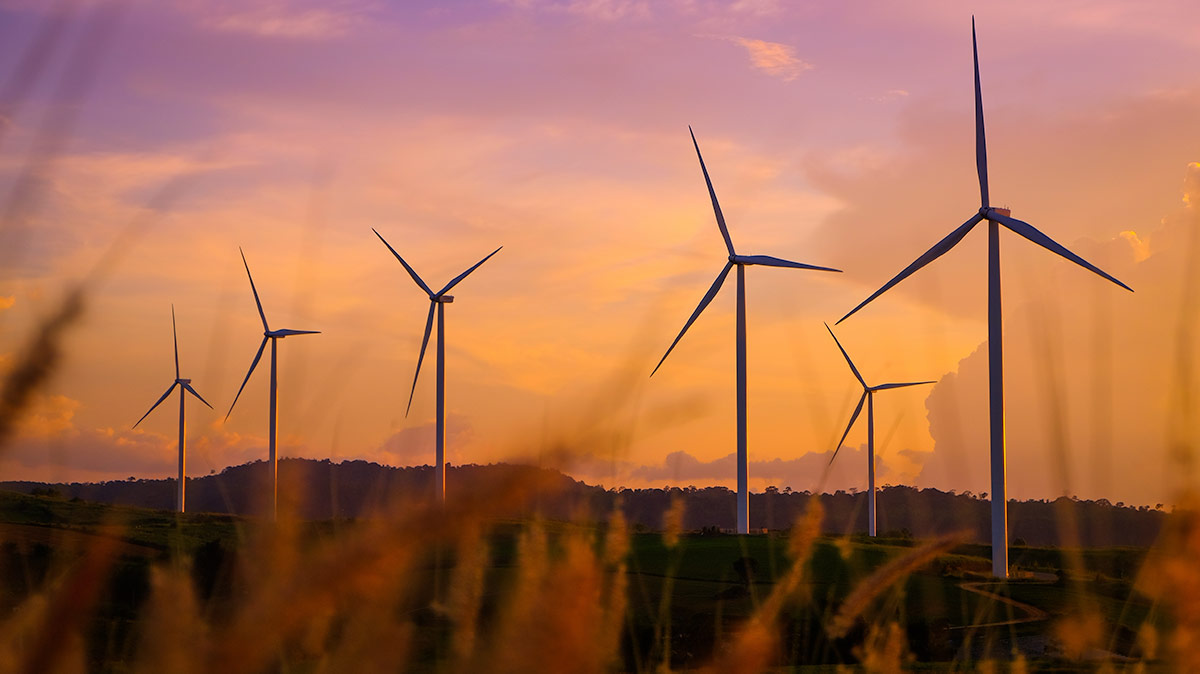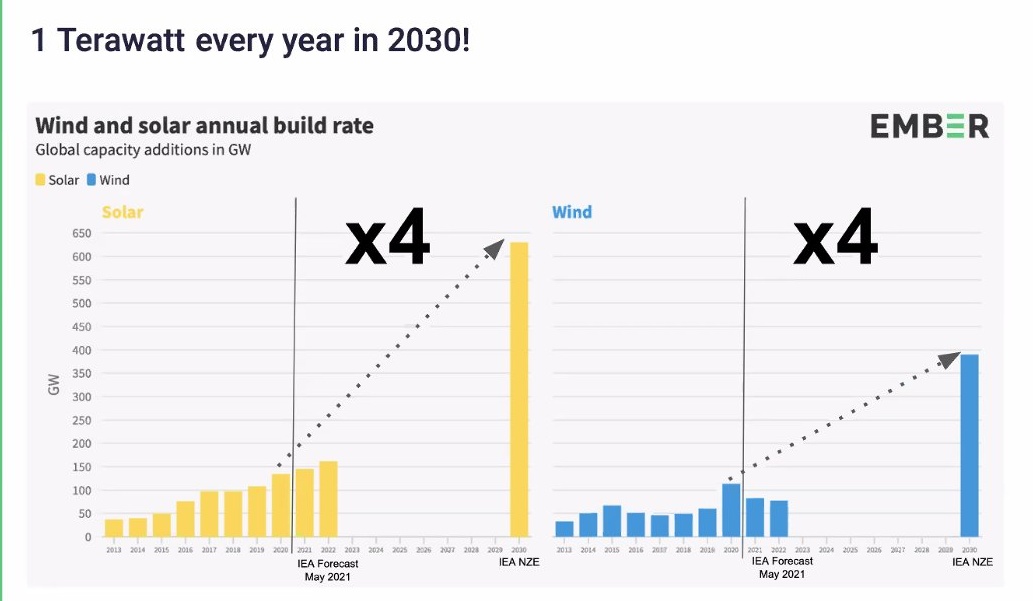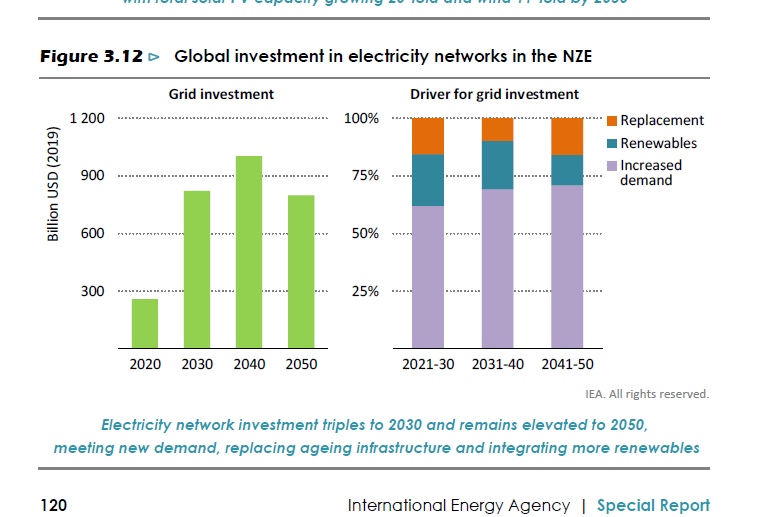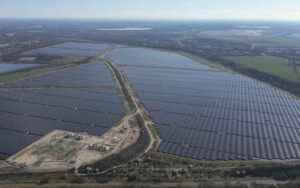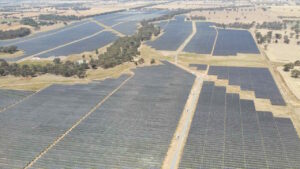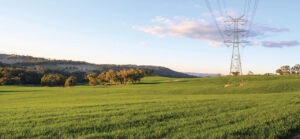The new report released yesterday by the International Energy Agency (IEA) has outlined a massive, rapid and significant rise in renewable energy around the world to meet a target of net zero global emissions by 2050. The key headline from the report is that it calls for an end to fossil fuel exploration and the stopping of all new fossil infrastructure to align with a 1.5°C global climate target and reach net zero emissions in the energy sector by 2050.
However, the report also outlines some significant changes in renewable energy, particularly wind and solar, required in the coming years and decades. In conjunction with significant global energy demand reductions from energy efficiency, behavioural change and resource efficiency, two thirds of total energy supply in 2050 comes from wind, solar, bioenergy, geothermal and hydro power.
Wind and solar comprise the bulk of this. Annual additions of 630 gigawatts of solar PV and 390 gigawatts of wind by 2030, four times the levels now, are required. As shown in a webinar response to the report by analytics firm Ember, this entails a scaling up of wind and solar within an extremely short time frame:
In the IEA’s modelling, nearly 70% of the world’s electricity comes from wind and solar by 2050. Nearly 90% of total electricity is from renewable energy, with the remainder from power generation equipped with carbon capture, nuclear or hydrogen. This significant rise in solar and wind is driven predominantly by rising demand in emerging market and developing economies, and requires significant investment in electricity grids. By 2040, there are no more fossil fuels remaining in the world’s electricity grids – the power sector becomes the only emissions free sector in 2040.
Though new investment in electricity networks is required for the growth of renewable energy, this remains smaller than the grid investment required to meet new demand.
Ember’s analysis of IEA’s report shows that prior to 2040, more than 75% of new electricity generation comes from wind and solar. Hydro provides 7%, nuclear 5% and bioenergy 4%. In the IEA’s scenario, total CO2 emissions fall 40% between 2020 and 2030, driven mostly by reductions in coal power output.
IEA still underestimating renewable energy
During the Ember webinar, Carbon Tracker’s Kingsmill Bond, recently interviewed on RenewEconomy’s podcast Energy Insiders, highlighted that even these ambitious scenarios for renewables are still somewhat pessimistic.
“So the IEA, for the last 10 years at least, has been the kind of shield for the fossil fuel system, to enable the fossil fuel system to carry on going with business as usual, and to pollute with impunity”, Bond said. “They’re actually incredibly cautious about renewable costs. Solar and battery costs have been falling at 18% a year for the last decade, the IEA is now telling us that that rate of fall of cost is going to drop to 5%. Over the next decade, and then to to one to 2% after 2030. That’s an extraordinarily bold call to say that the rate of cost falls is suddenly going to stop”, he said.
Bond also highlighted that the IEA is expecting a rate of growth of solar deployment of 22% per year in the next decade. “But after 2030, they expect that declines to 8% a year for the next decade. And then 3% after 2040. Neither of those numbers I would suggest is credible”.
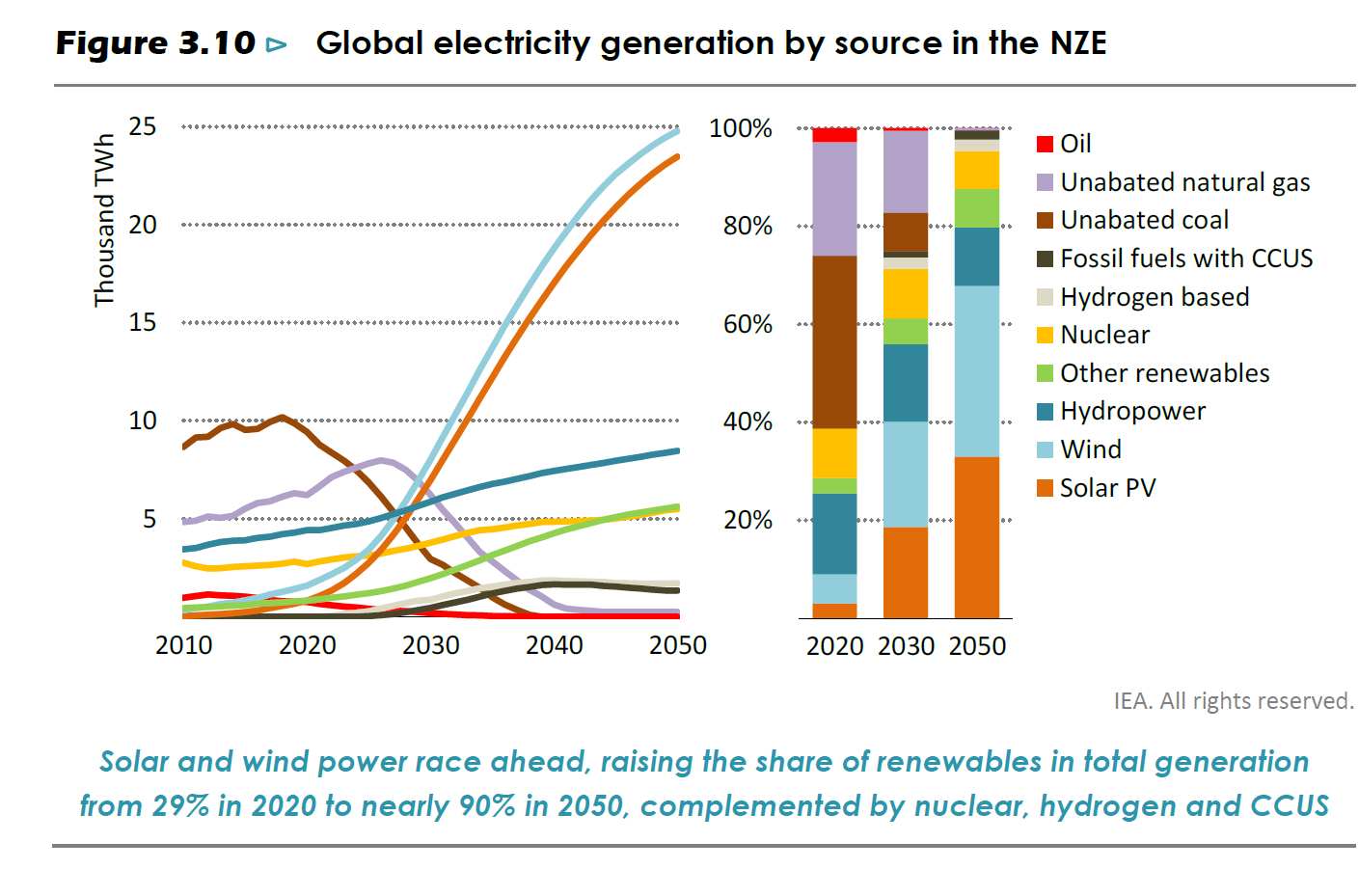 The IEA has previously faced criticism for a systemic underestimation of the deployment and costs of renewable energy, particularly solar power.
The IEA has previously faced criticism for a systemic underestimation of the deployment and costs of renewable energy, particularly solar power.

